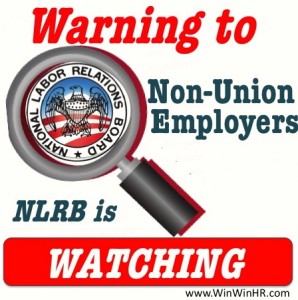 A recent decision by the National Labor Relations Board (“NLRB”) has complicated even further the already challenging world of conducting investigations into allegations of workplace harassment. In light of this new ruling, it’s ever more important employers use well-trained investigators and give careful consideration to how an investigation is structured and witnesses are interviewed.
A recent decision by the National Labor Relations Board (“NLRB”) has complicated even further the already challenging world of conducting investigations into allegations of workplace harassment. In light of this new ruling, it’s ever more important employers use well-trained investigators and give careful consideration to how an investigation is structured and witnesses are interviewed.
NOTE: This NLRB decision affects non-union employers too!
As I’ve reminded readers of this blog before, the National Labor Relations Act (NLRA) prohibition against engaging in any actions that would chill employees’ rights to engage in “concerted activity” applies to ALL EMPLOYERS – not just unionized employers. “Concerted activity” is defined as two or more employees taking action for their mutual aid or protection regarding terms and conditions of employment.
The Decision
In Fresh & Easy Neighborhood Market, Inc., the NLRB held an employee was engaged in “concerted activity” for the purpose of “mutual aid and protection” when she solicited statements from fellow employees to support her sexual harassment claim against another employee.
The female employee complained of sexual harassment after one of the words she had written on a whiteboard at the request of her supervisor was subsequently changed to an inappropriate term for the workplace, and a drawing of a peanut or worm urinating on the employee’s name was added. Because a workplace policy prohibited using cameras in the workplace, the complaining employee drew a picture of the offensive material and asked three coworkers to verify that her drawing was an accurate rendition of what was on the whiteboard. When she made the request that they sign her drawing, she told her coworkers that she intended to file a sexual harassment claim with the employer.
One of the co-workers who signed the drawing later complained to the employer that she was “bullied” into signing. Another co-worker who signed later testified that she signed only to avoid making a scene in front of customers. Significantly, none of the co-workers who signed the paper intended to take group action.
After receiving the employee claim of sexual harassment and the signed drawing, the employer instructed her to refrain from soliciting any further statements while it conducted the investigation into her complaint.
The employer’s investigation identified the employee who had altered the whiteboard message and the employer disciplined him. The employer did not discipline the female employee who complained of sexual harassment for the alleged bullying or take any other adverse actions against any other employees.
The majority of the NLRB concluded that when she asked her co-workers to sign her drawing, the complaining employee was engaged in “concerted” activity for the “purpose of mutual aid or protection.” They reached this conclusion even though her
- co-workers didn’t agree with her complaint of sexual harassment;
- two of the co-workers who signed the drawing were uncomfortable with her request and only signed to keep her from annoying them and to avoid making a scene in front of a customer; and
- the complaining employee was the only immediate beneficiary of the solicitation to sign the drawing.
Despite finding a violation of the National Labor Relations Act, the NLRB ultimately ruled in the employer’s favor. It did so for two reasons specific to the facts of this case.
First, the NLRB found that the employer’s “narrowly tailored” instruction to the complaining to refrain from obtaining additional statements from co-workers was a legitimate business justification to safeguard the integrity of an impartial and thorough investigation. In reaching this conclusion, however, it is important to know that the NLRB was also careful to remind employers that a blanket prohibition of discussing ongoing investigations of employee misconduct would violate Section 8(a)(1) of the NLRA. Second, the NLRB concluded the complaining employee inappropriately altered the statements of her co-workers.
Implications for ALL Employers
Given that this NLRB decision appears to expand the workplace activity that is protected by the National Labor Relations Act, employers can anticipate years of litigation to thrash out the particulars of what exactly is protected activity and what is not.
In the midst of this uncertainty, here are two suggested steps prudent employers should consider taking to mitigate the risks of becoming embroiled in NLRB actions or challenges of improper internal investigations by plaintiff’s counsel.
First Suggestion:
Review your policy manuals and investigation protocols o make sure the language complies with the NLRB’s “narrowly tailored” directive. Click here to read my earlier blog and the Advice Memorandum issued by the NLRB that provides additional clarification on its position on confidentiality in workplace investigations.
Second Suggestion:
Make sure you use well-trained individuals who are aware of this decision to investigate complaints of harassment and other workplace misconduct. If your internal resources need additional training, click here for information on upcoming training that is available in the coming months in Atlanta, GA, Washington, D.C., Metro-New York City, Hartford, CT, Scottsdale, AZ, Las Vegas, NV, Denver, CO, Cincinnati, OH, and Chicago, IL.
